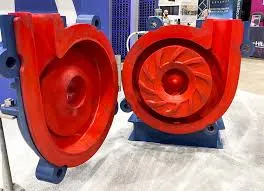English
- Afrikaans
- Albanian
- Amharic
- Arabic
- Armenian
- Azerbaijani
- Basque
- Belarusian
- Bengali
- Bosnian
- Bulgarian
- Catalan
- Cebuano
- Corsican
- Croatian
- Czech
- Danish
- Dutch
- English
- Esperanto
- Estonian
- Finnish
- French
- Frisian
- Galician
- Georgian
- German
- Greek
- Gujarati
- Haitian Creole
- hausa
- hawaiian
- Hebrew
- Hindi
- Miao
- Hungarian
- Icelandic
- igbo
- Indonesian
- irish
- Italian
- Japanese
- Javanese
- Kannada
- kazakh
- Khmer
- Rwandese
- Korean
- Kurdish
- Kyrgyz
- Lao
- Latin
- Latvian
- Lithuanian
- Luxembourgish
- Macedonian
- Malgashi
- Malay
- Malayalam
- Maltese
- Maori
- Marathi
- Mongolian
- Myanmar
- Nepali
- Norwegian
- Norwegian
- Occitan
- Pashto
- Persian
- Polish
- Portuguese
- Punjabi
- Romanian
- Russian
- Samoan
- Scottish Gaelic
- Serbian
- Sesotho
- Shona
- Sindhi
- Sinhala
- Slovak
- Slovenian
- Somali
- Spanish
- Sundanese
- Swahili
- Swedish
- Tagalog
- Tajik
- Tamil
- Tatar
- Telugu
- Thai
- Turkish
- Turkmen
- Ukrainian
- Urdu
- Uighur
- Uzbek
- Vietnamese
- Welsh
- Bantu
- Yiddish
- Yoruba
- Zulu
Telephone: +86 13120555503
Email: frank@cypump.com
Nov . 25, 2024 03:25 Back to list
Understanding the Operation and Design of Mixed Flow Centrifugal Pumps
Understanding Mixed Flow Centrifugal Pumps
Mixed flow centrifugal pumps are an essential component in various applications where the transfer of liquids is required. Characterized by their unique design, these pumps combine the features of radial and axial flow pumps, making them suitable for moving fluids at moderate flow rates and higher heads. This article explores the design, applications, advantages, and considerations associated with mixed flow centrifugal pumps.
Design Features
Mixed flow pumps typically feature a multi-vane impeller, which allows them to efficiently handle a wide range of flow conditions. The impeller blades are positioned at an angle, allowing fluid to be moved both radially and axially. This design enables the pump to achieve a balance between high flow rates and increased pressure, making it versatile for various applications.
The casing of a mixed flow pump is usually volute-shaped or diffuser-type, which helps convert kinetic energy into pressure, further enhancing the efficiency of the pump. The construction material for these pumps can vary depending on the nature of the fluid being pumped, with options including cast iron, stainless steel, and various alloys. This flexibility in material choice ensures durability and resistance to corrosion or wear.
Applications
Mixed flow centrifugal pumps are widely used across numerous industries. In municipal water systems, they facilitate the distribution of potable water and manage wastewater treatment processes. In agriculture, these pumps are used for irrigation systems and managing drainage in fields. They are also commonly found in industrial applications, such as chemical processing and power generation, where they are responsible for transferring process fluids.
mixed flow centrifugal pump

Additionally, these pumps are favored in HVAC systems to circulate hot or chilled water for heating and cooling purposes. Their efficiency and reliability make them a preferred choice for systems requiring consistent flow and pressure.
Advantages
One of the primary advantages of mixed flow centrifugal pumps is their ability to handle fluids with varying viscosities. This adaptability is particularly beneficial in industries where the nature of the pumped fluid can change. Another significant advantage is their relatively high efficiency, which can lead to reduced energy consumption and lower operational costs.
Mixed flow pumps also require less maintenance compared to other pump types, primarily due to their robust design and fewer moving parts. Their operational versatility means they can be easily integrated into existing systems without extensive modifications.
Considerations
While mixed flow centrifugal pumps offer numerous benefits, there are some considerations to bear in mind. Selecting the appropriate pump size and design requires a thorough understanding of the specific application's demands, including flow rates, head requirements, and the properties of the fluid being pumped. Additionally, installing the pump at the correct elevation and ensuring proper alignment can influence its overall performance and longevity.
In conclusion, mixed flow centrifugal pumps represent a critical technology in fluid management across various sectors. Their unique design and operational flexibility provide numerous advantages, making them a popular choice for engineers and operators alike. Understanding their features, applications, and maintenance needs ensures that these pumps operate efficiently, contributing to the success of any liquid transport system.
-
ISG Series Vertical Pipeline Pump - Chi Yuan Pumps Co., LTD.|High Efficiency, Energy Saving, Low Noise
NewsJul.30,2025
-
ISG Series Vertical Pipeline Pump- Chi Yuan Pumps|High Efficiency&Low Noise
NewsJul.30,2025
-
ISG Series Vertical Pipeline Pump-Chi Yuan Pumps Co., LTD.|High Efficiency&Energy Conservation
NewsJul.30,2025
-
ISG Series Vertical Pipeline Pump - Chi Yuan Pumps Co., LTD.|Advanced Hydraulic Design&Energy-Efficient Solutions
NewsJul.30,2025
-
ISG Series Vertical Pipeline Pump - Chi Yuan Pumps Co., LTD.
NewsJul.30,2025
-
ISG Series Vertical Pipeline Pump - Chi Yuan Pumps Co., LTD.|energy-efficient fluid handling&industrial durability
NewsJul.30,2025










